Beatles tour highlight of two-week British Isles cruise
The Arizona Republic — June 9, 2024
LIVERPOOL, England — Sixty-four years ago the Beatles embarked on a long and winding road toward international superstardom, ultimately becoming what many consider to be the most influential, culturally significant and celebrated band in pop-music history.
All these decades later, Beatlemania has barely missed a beat.
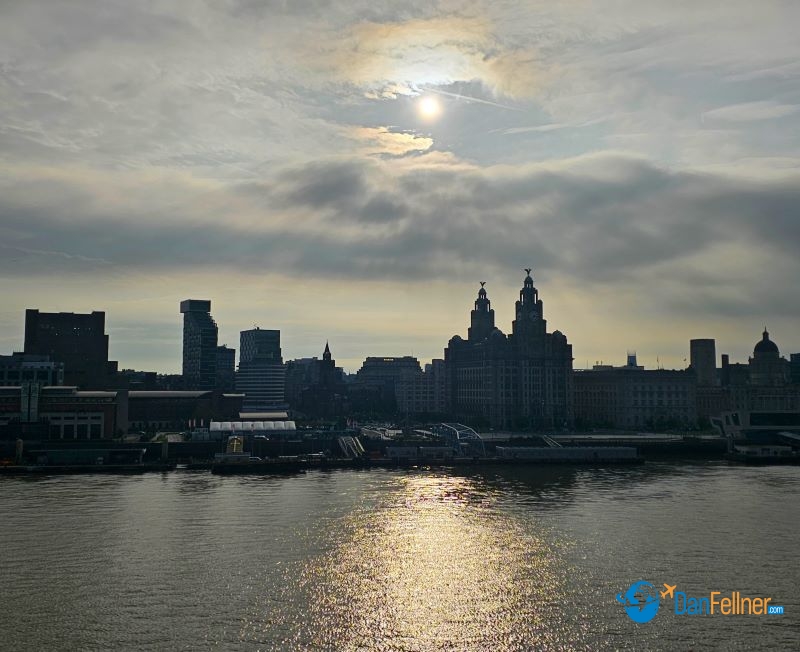
The early-morning sun peeks through the clouds over downtown Liverpool, a city of a half-million people on the River Mersey in northwest England.
Nowhere is this more apparent than this city on the River Mersey in northwest England, where John, Paul, George and Ringo were born, raised and played their first gigs together.
The Beatles’ far-reaching and colorful legacy is one of the main reasons Liverpool attracts more than a million tourists each year – double the city’s population. According to a government report, Beatles-related tourism to Liverpool brings in more than $150 million annually and supports 2,500 jobs.
I recently joined the throng of nostalgia-hungry Beatles fans during a visit to Liverpool, a port stop midway through a two-week cruise around the British Isles on the 2,668-passenger Holland America Rotterdam.
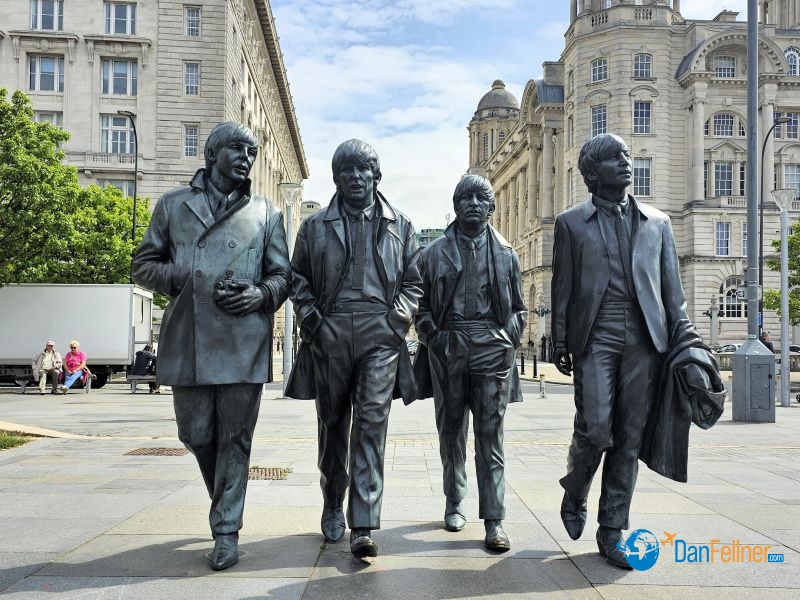
The iconic statue of the Beatles in downtown Liverpool, England. The statue was unveiled in 2015 to commemorate the 50-year anniversary of the Beatles’ last performance in Liverpool.
Unfortunately, I had to cram all of my Beatles’ sightseeing — including visits to two museums and venues where the group honed their musicianship and the places that inspired some of their songs — into just one jam-packed day before our ship set sail for Wales.
Yes, to borrow the words of Lennon and McCartney, I was a day-tripper.
I was on a sold-out tour with 43 fellow cruise-ship passengers called “In the Footsteps of the Fab Four.” The excursion was led by John Bruce, a Liverpool musician and guide who proudly noted that he was born in the same hospital as John Lennon.
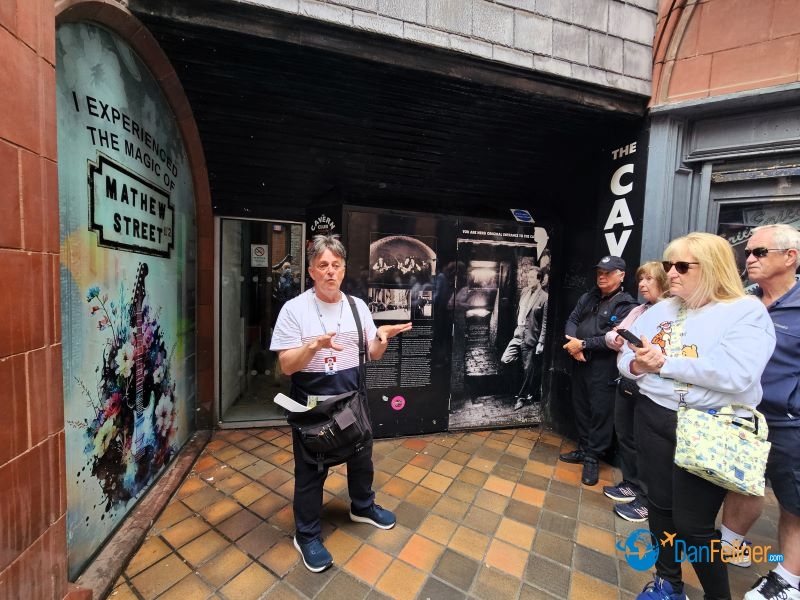
Musician and guide John Bruce leads a tour called In the Footsteps of the Fab Four in front of the original entrance to the Cavern Club in Liverpool, England.
“She’s got a ticket to ride,” he quipped as a woman boarded the bus at the start of the tour. It was the first of what proved to be a day full of references to Beatles’ songs and amusing – and sometimes poignant — stories.
We started on Liverpool’s waterfront at the Royal Albert Dock, a mid-19th century complex of dock buildings and warehouses that also houses several museums, hotels, bars and restaurants.
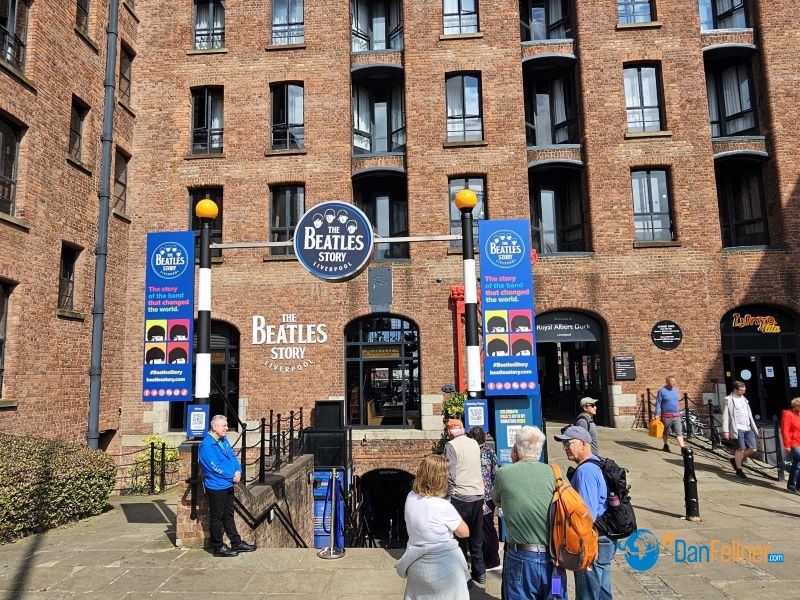
The entrance to the Beatles Story museum located in the historic Royal Albert Dock on the River Mersey in Liverpool, England.
At the dock a sign in front of the popular Beatles Story beckoned us inside to learn “the story of the band that changed the world.” The museum features recreations of key locations and events in the band’s career and also includes fascinating pieces of original memorabilia. There are sections on each band member’s solo career following the group’s breakup in 1970.
It was especially moving to see John Lennon’s iconic orange-tinted spectacles, which he was wearing when he wrote the 1971 song “Imagine.” Lennon was fatally shot outside his New York City apartment nine years later.
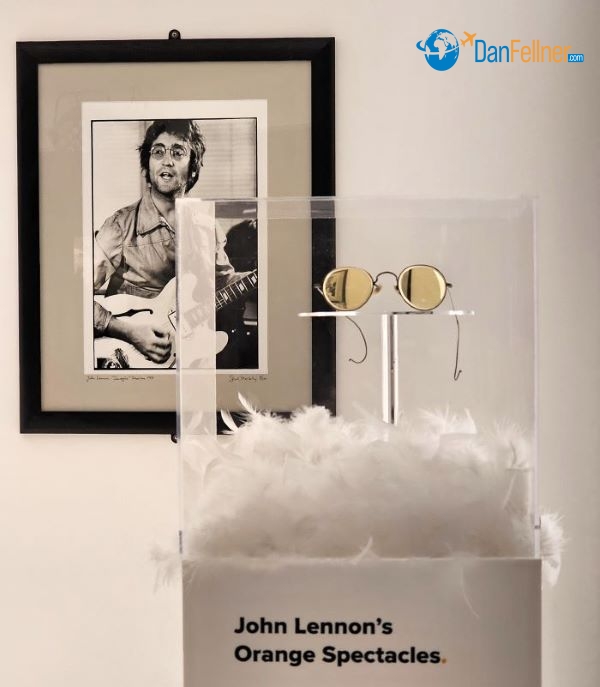
John Lennon’s famous orange-tinted eyeglasses, one of the exhibits at the Beatles Story museum in Liverpool, England. Lennon wore the glasses when composing his legendary song “Imagine.”
Two blocks away is the most popular selfie-spot in Liverpool – a bronze statue of the Beatles, inspired by a 1963 photo of the group strolling along the River Mersey. The statue was unveiled in 2015 to commemorate the 50-year anniversary of the Beatles’ last performance in Liverpool.
Many of Liverpool’s must-see sites related to the Beatles are clustered on Mathew Street, less than a mile east of the Beatles statue. You’ll know you’re in the vicinity when you pass by the Hard Days Night Hotel, the Hey Jude Hair and Beauty Salon and the Rubber Soul bar.

Liverpool’s famous Cavern Club, where the Beatles performed 292 times from 1961-63. The original Cavern Club was demolished in 1973 but reopened 10 years later at a spot 20 yards down the road.
Mathew Street is home to the legendary Cavern Club, where the Beatles played an astonishing 292 times between 1961-63 when they surged to prominence on the Liverpool music scene.
The original Cavern Club was demolished in 1973 but reopened 10 years later at a spot 20 yards down the block, using the same dimensions and many of the club’s original bricks. The Cavern Club still hosts live music; McCartney performed there as recently as 2018.
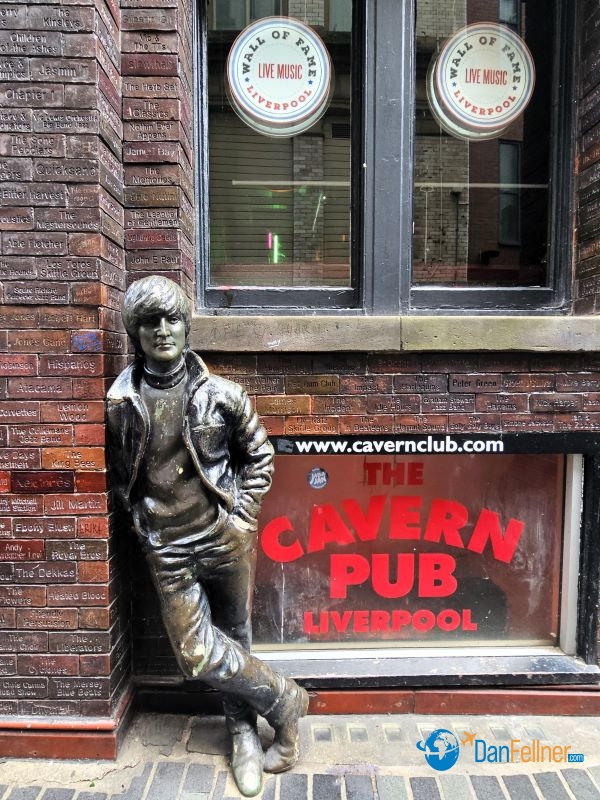
A statue of a young John Lennon on Mathew Street in Liverpool near the famous Cavern Club, where the Beatles performed 292 times in the early 1960s.
Across the street is a statue of a young John Lennon and The Wall of Fame, which showcases 58 records from Liverpool-based artists that reached number 1 on the U.K. singles chart. Besides the Beatles, Liverpool has produced numerous other hitmakers, including Gerry and the Pacemakers, the Searchers and Cilla Black, who once worked as a hat-check girl at the Cavern.
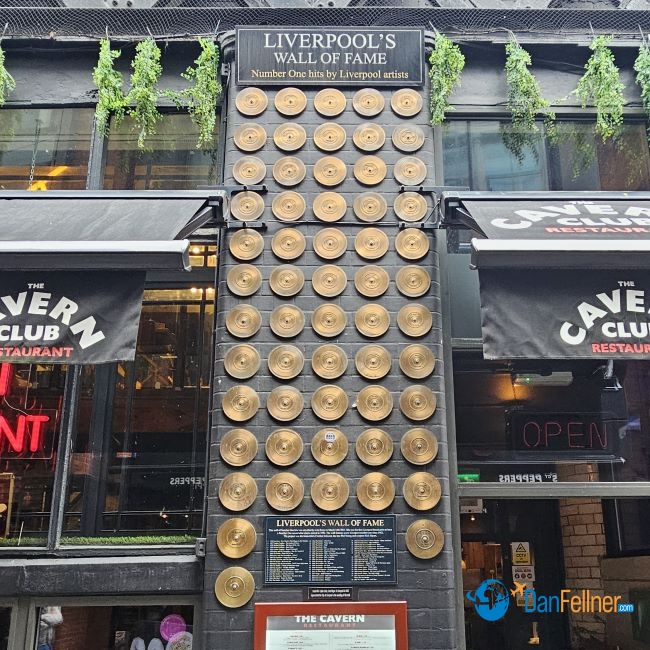
The Wall of Fame on Mathew Street in Liverpool showcases 58 records from Liverpool-based artists that reached number 1 on the U.K. singles chart. The wall is dominated by the Beatles, who have 18 records featured on it.
The Liverpool Beatles Museum, another attraction on Mathew Street, has more than 1,000 items of Beatles memorabilia displayed on three floors. I especially enjoyed seeing two of the original seats from Shea Stadium, where the Beatles played a landmark concert in 1965 in front of 55,000 screaming fans. The museum is owned by the family of Pete Best, the Beatles’ original drummer who was fired by the group in 1962 and replaced with Ringo Starr.
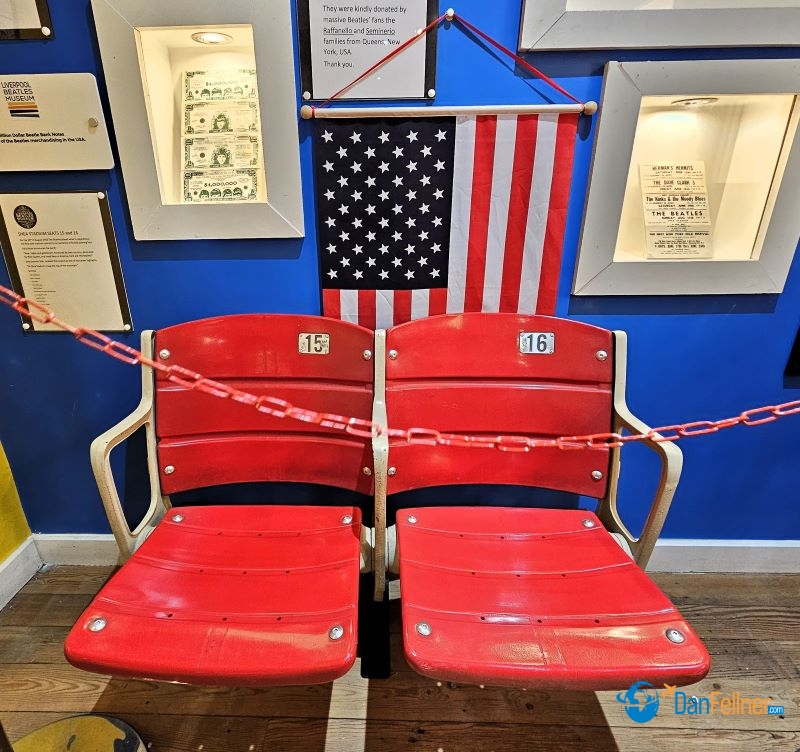
Two seats from Shea Stadium in New York where the Beatles played in front of 55,000 fans in 1965. The seats are on display at the Liverpool Beatles Museum.
After visiting Mathew Street, we drove through south Liverpool and passed by the Beatles’ childhood homes and schools. We stopped at Penny Lane, which Paul McCartney immortalized in a 1967 song that was a tribute to his Liverpool upbringing. Over the years, Beatles’ fans have pilfered so many of the Penny Lane street signs, the city has had to affix them to metal posts.
We also stopped at the entrance to Strawberry Field — formerly the site of a Salvation Army children’s home — where John Lennon played as a child. It later inspired him to write the 1967 song “Strawberry Fields Forever.”
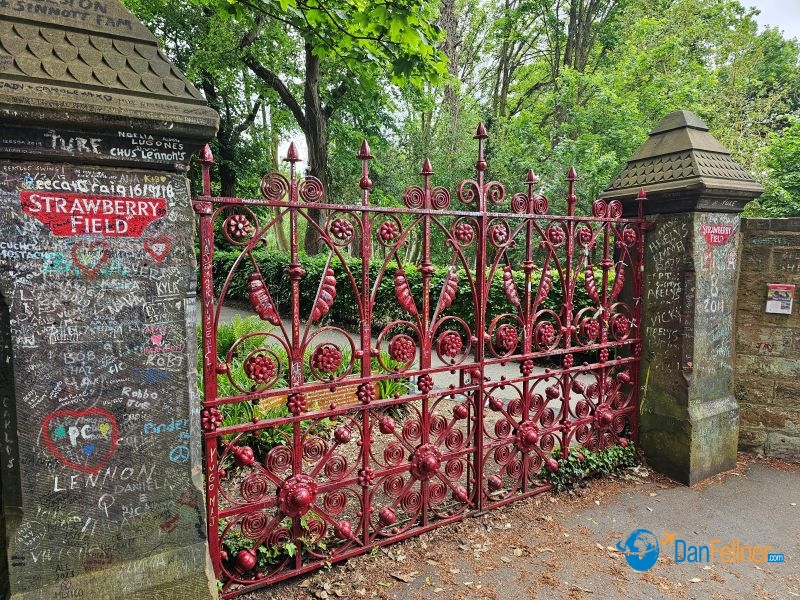
The entrance to Liverpool’s Strawberry Field — formerly the site of a Salvation Army children’s home — where John Lennon played as a child. It later inspired him to write the 1967 song “Strawberry Fields Forever.”
Bruce, who has been leading Beatles’ tours for six years, played the two songs over the bus’s sound system – along with his own recording of “Let it Be” – while he offered his interpretation of the songs’ meaning.
“I’m a musician and I have a passion for the Beatles,” he says. “When you reveal the reasons about why they wrote some of their songs, it’s incredible. Sometimes I’ve had people at Penny Lane with big tears in their eyes because it means so much to them.”
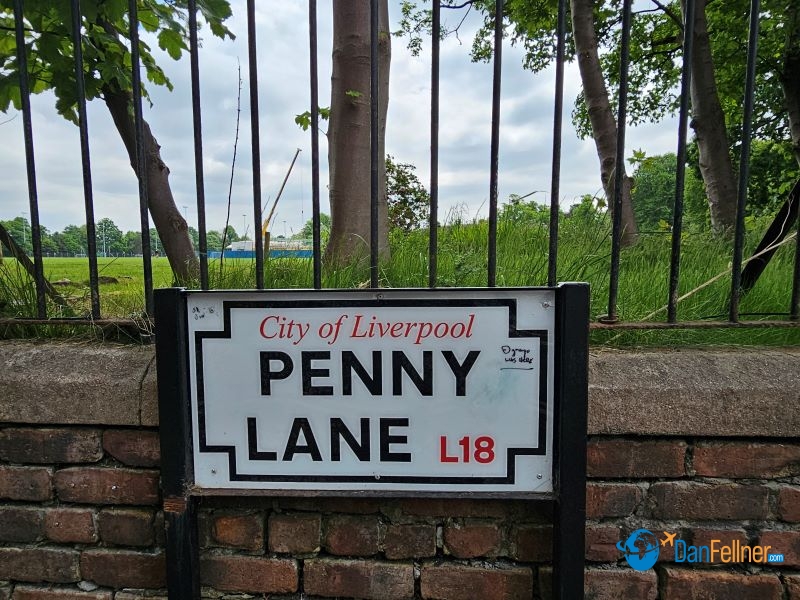
A street sign on Penny Lane in the Liverpool suburb of Mossley Hill. The street became famous in 1967 when the Beatles released their song “Penny Lane” in tribute to their Liverpool upbringing.
The cruise started and ended in Rotterdam, Netherlands, where the Holland America line was founded 151 years ago. The Rotterdam ship, which took its maiden voyage in 2021, is the newest addition to Holland America’s fleet of 11 ships.
Our sailing was close to capacity with more than 2,600 passengers, about half of whom were Americans. There also was a large contingent of Dutch passengers; all of the ship’s announcements were made in both English and Dutch. Cruises to the British Isles typically run from late April through October.
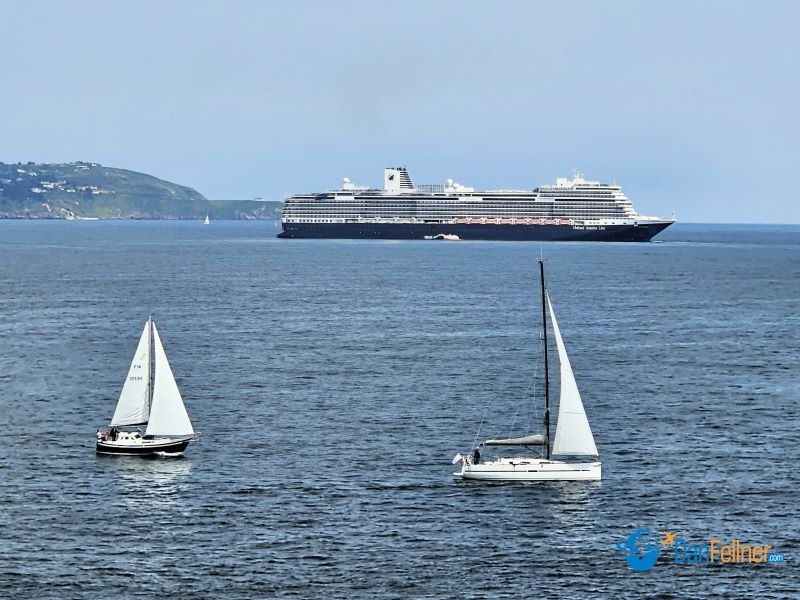
The 2,668-passenger Holland America Rotterdam anchored off the coast of Dun Laoghaire, Ireland, during a two-week cruise of the British Isles.
We stopped in 10 ports over the course of two weeks in such places as Scotland, Wales, Ireland and the Isle of Man, a self-governing British Crown Dependency that was the birthplace of another famous pop group, the Bee Gees.
But it was Liverpool — and my pilgrimage to trace the footsteps of a group that produced so much groundbreaking and enduring music – that I’ll remember the most.
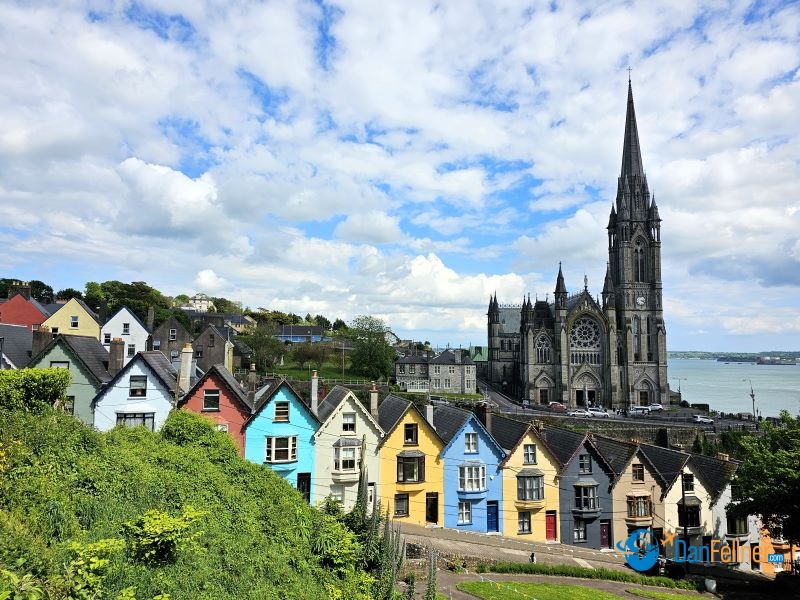
The picturesque village of Cobh in County Cork, Ireland, one of the port stops on a two-week cruise of the British Isles on the Holland America Rotterdam.
Fittingly, as our bus returned to the cruise pier at the end of the tour, Bruce ended his commentary with yet one more reference to a popular Beatles’ song.
“Congratulations,” he told us. “You’ve just spent a day in the life of the Fab Four.”
© 2024 Dan Fellner


